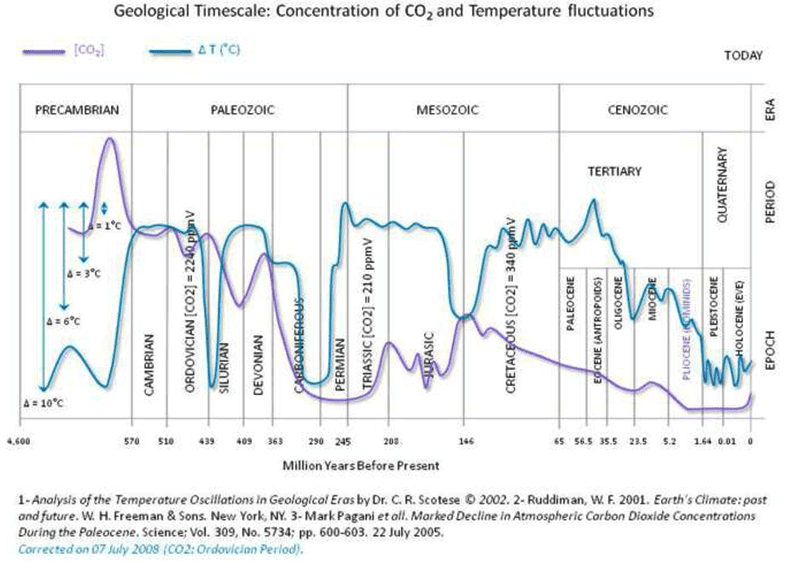- Dec 18, 2013
- 136,320
- 27,889
- 2,180
In the ice, there'd be CO2 frozen in it. Ice coring verifies that. so again, when the ice melts, all that CO2 goes into the atmosphere. I would expect a spike or an increase in atmospheric levels when that occurred, not the presence of human life.Quite obviously, you, as an idiot, do not understand basics.i just have to laugh at this old sock update on glacial-interglacial cycles. Exactly why is there more CO2 in the atmosphere today, ice melted. Not humans existed. holy crap batman, I don't understand idiot. I just don't.CO2 levels dropped because the oceans were significantly colder, and cold water absorbs more CO2 than warm water. The changes in the Milankovic Cycles started warming the southern ocean, which emitted CO2, which increased the warming. Also much carbon was buried on land by the continental glaciers.The earth was getting more stable???
Please explain that one to us (I have to hear this one)

Up and down and up and down, you see the massive changes in the Silurian ages, between the Carboniferous and Permian ages? Then the Tertiary period the temperatures began to drop to the modern age where ups and downs have been relatively smaller and quite consistent. Even before the Tertiary age things were getting more stable, the Cretaceous era seemed to be a little stable, then temperatures rose and then dropped down further.
CO2 levels have been dropping for quite a long time, until human advancement too. CO2 levels have been stable for hundreds of thousands of years, after this slow and steady drop.
No doubt a lot of this is a decrease in the number of volcanoes, perhaps plate tectonics slowing down or being so extreme. The Earth is possibly entering a far more stable era. Unless humans change it all, of course.
CO2 levels dropped largely because the Ice Ages bound up all the Natural carbon exchange between ocean, land and atmosphere. And nothing much was LIVING during that period. CO2 is largely an indicator of LIFE on the planet. Since it's part of the combustion system of every living thing..
Glacial-interglacial atmospheric CO2 change —The glacial burial hypothesis - Springer
Abstract
Organic carbon buried under the great ice sheets of the Northern Hemisphere is suggested to be the missing link in the atmospheric CO2 change over the glacial-interglacial cycles. At glaciation, the advancement of continental ice sheets buries vegetation and soil carbon accumulated during warmer periods. At deglaciation, this burial carbon is released back into the atmosphere. In a simulation over two glacial-interglacial cycles using a synchronously coupled atmosphere-land-ocean carbon model forced by reconstructed climate change, it is found that there is a 547-Gt terrestrial carbon release from glacial maximum to interglacial, resulting in a 60-Gt (about 30-ppmv) increase in the atmospheric CO2, with the remainder absorbed by the ocean in a scenario in which ocean acts as a passive buffer. This is in contrast to previous estimates of a land uptake at deglaciation. This carbon source originates from glacial burial, continental shelf, and other land areas in response to changes in ice cover, sea level, and climate. The input of light isotope enriched terrestrial carbon causes atmospheric δ13C to drop by about 0.3‰ at deglaciation, followed by a rapid rise towards a high interglacial value in response to oceanic warming and regrowth on land. Together with other ocean based mechanisms such as change in ocean temperature, the glacial burial hypothesis may offer a full explanation of the observed 80–100-ppmv atmospheric CO2 change.
There was plenty of life south of the ice line. Expecially in North America. Huge lakes in Oregon, California, and Nevada. Actually more differant species then than live here today. Quite a lot went extinct during the Younger Dryas.
During the last glacial, there were a lot of humans alive. In fact, this is our second interglacial, as Homo Sap has been around for at least 160,000 years.

